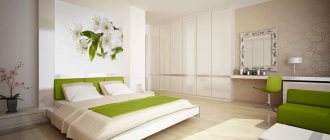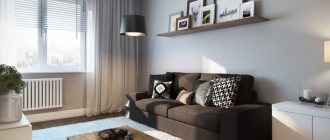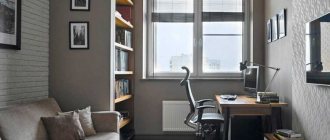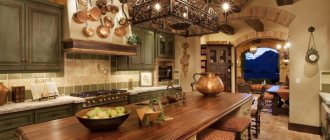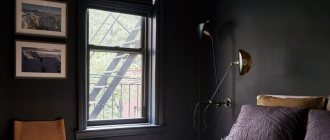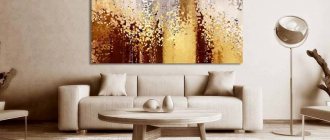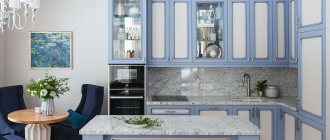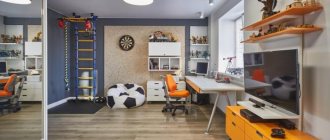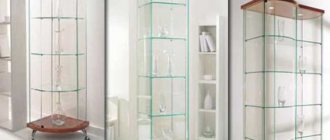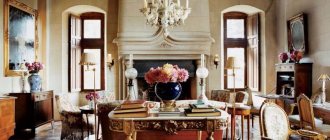Renovating a house or apartment, changing the design, carrying out a radical redevelopment is an inevitable reality that each of us faces. At this moment, issues related to the choice of finishing materials, furniture, and decorative items become relevant. One of the most important items on the renovation list is the flooring. It should not only be functional, but also be aesthetically pleasing. All requirements are fully met by a 3D floor, which allows you to implement different design solutions, with it the interior of any room becomes original and unusual.
Features of self-leveling 3D floors
In terms of manufacturing technology, 3D floors are practically no different from their self-leveling counterparts, which were previously used exclusively in industrial and public spaces. The main highlight is the effect of presence. Three-dimensional drawings have long been included in many areas of our lives. You will no longer surprise anyone with such things as photo wallpapers, stretch ceilings with a realistic image of the starry sky.
Self-leveling 3D floors appeared not so long ago. The idea for their creation originated from street art. Three-dimensional graphic pictures were drawn by street artists; their creations aroused interest and admiration among the audience. Creative designers picked up this idea and brought street technology into living spaces. Many people also liked this, as evidenced by the interest in flooring.
The drawings can be absolutely anything: your own photos from a digital camera; ready-made pictures downloaded from the network; paintings made to order. The main thing is high quality, large size images that can be transferred to the base using a large-format plotter in any advertising agency. However, finding a device of the appropriate size is quite difficult, so in most cases the picture is divided into several fragments.
The image is printed either on banner fabric or on a satin base. You can also use ready-made vinyl films or photo wallpaper. You can also create a 3D effect using various objects placed on a base polymer layer. For example, multi-colored sand, shells, pebbles, wood slices, coins, etc. When choosing this method, it is worth taking into account the high consumption of materials and the increased cost of coating.
When choosing a design, you must not only rely on personal preferences and the functionality of the room, but also take into account the psychological message. Too aggressive paintings with a terrible plot can have a negative impact on the psyche and health.
Which is better, screed or self-leveling floor?
| Type of leveling coating | Advantages | Flaws |
| Screed | + affordable price + evens out large differences (from 2 cm) + wide range of finishes | — installation of beacons and special tools are required — surface quality is low – large layer thickness (at least 2 cm) |
| Self-leveling floor | + easy leveling of the base + possibility of independent use + high surface quality | - high price — the coating cannot be restored - you can even out small differences |
Advantages and disadvantages
Self-leveling 3D floors are valued both for their aesthetic qualities and for their functionality, reliability and safety. They represent a unique surface that consists of three layers: a base base, a three-dimensional image, and a protective coating. The structure and materials used are responsible for good performance characteristics. Among the main advantages of this type of finishing are:
- Durability . The coating has a long service life of more than 20 years, while it does not lose its presentable appearance.
- Durability . If the casting technology is followed, the canvas will be resistant to mechanical loads and impacts.
- Wear resistance . The finish has good resistance to abrasion and abrasion.
- No seams . After pouring, the floor is solid and smooth, without any seams.
- Decorative properties . You can choose any design, decorate the room in an original way, and bring bold design ideas to life.
- Ecological cleanliness . After hardening, the raw material becomes harmless and does not harm the health of residents.
- UV resistance . The picture does not fade under the influence of sunlight.
- Moisture resistance . The polymer material completely and reliably covers the base and serves as a waterproofing agent. It is neutral to water, so it can be used in the bathroom, toilet, and kitchen.
- Fire safety . The components used belong to category G1, they do not burn.
- Chemical inertness . The polymers used are not affected by chemicals and can be cleaned with detergents.
- Possibility of heating . It is possible to combine it with a “warm floor” system.
- Easy care . The canvas does not accumulate dust or absorb dirt. To maintain cleanliness, it is enough to periodically perform wet cleaning.
Like any other material, canvas has a number of disadvantages:
- High price . Arranging even a small room will require significant costs, which not everyone can afford.
- Complex pouring technology . Only professionals can do quality work.
- Dismantling . Removing floor covering is very difficult. It becomes monolithic; you will have to use a jackhammer to work.
- Long hardening time . Drying the poured layer can take up to six days, and at low temperatures and high humidity this process takes longer.
The three-dimensional image will dominate the interior and act as an accent.
Self-leveling coatings with 3D effect
Many consumers consider 3D self-leveling floors in the kitchen to be an invention of today. In fact, the history of this technology goes back more than three decades. It all started with creating three-dimensional images on asphalt. This technique was invented by Italian artists. The expressiveness of three-dimensional drawings attracted the attention of designers, who began to introduce elements everywhere into the design of fashionable hotels and respectable offices.
There are two ways to create self-leveling floors with a 3D effect. The image can be manually applied to the base layer with paints. To add dimension, a clear varnish is applied to the base and covers the design. More often, a different method is used in interiors. In it, an image is printed onto banner material or vinyl film. Varnishes are applied to it, providing a 3D effect. This technique for creating self-leveling floors for the kitchen:
- reduces the amount of expenses;
- expands image selection options;
- ensures quick installation.
Self-leveling floors with 3D effect
Printing images costs less than hand-painted art. Modern technologies provide high transfer accuracy, brightness, saturation, and do not limit the choice of images. The realism of such images is reflected in photos of self-leveling floors in the kitchen. Vinyl and banner fabric are highly durable and have a long service life. This method can be used to decorate floors and walls. The image for the self-leveling floor is duplicated, creating the same accent on the wall.
The disadvantage of floors with 3D effects is the high cost. If you need to save costs on interior decoration, you should give preference to matte finishes with a pattern. They are cheaper and have increased abrasion resistance. It is enough to look at photos of self-leveling floors in a kitchen with this design to be convinced of their attractiveness and respectability.
Types of self-leveling floors
There are many different characteristics of self-leveling floors. Based on the thickness of the coating, they are divided into: thin-layer (less than 1 mm), medium (up to 5 mm), highly filled (the mixture layer reaches 8 mm or more). By solvent: aqueous, solvent. By surface type: smooth, rough. According to electrical conductivity: conductive, non-conductive. But the main division into types is carried out depending on the binding materials used:
- Methyl methacrylate . For production, solutions based on methyl methacrylic resins are used. The main advantage is rapid curing within 1-2 hours, but you need to work with the composition very quickly. Without professional skills, it will not be possible to perform correct installation. Most often used in industrial facilities.
- Cement-acrylic . The composition includes the following components: cement, acrylic, fine sand, plasticizers and other additional additives, usually mineral. Previously, such coating was used exclusively in food production. The material is not afraid of water, chemicals, mechanical influences, and it creates a non-slip surface.
- Epoxy . The main component is epoxy resin. Floors are hard and rigid, but have reduced impact resistance. They can be used on wood, metal and concrete substrates. They are characterized by good wear resistance and are not subject to abrasion, so they can be installed even in high-traffic areas, for example, in shopping centers, cafes, public and educational institutions.
- Polyurethane . The base of the mixture is polyurethane. They are characterized by high elasticity and flexibility, have high tensile and compressive strength, which eliminates the possibility of cracks. This is the most popular type, which is durable, hygienic, and is used even in medical institutions.
Features of self-leveling floor covering
Numerous photos of self-leveling kitchen floors posted online attract the attention of many homeowners who want to transform their interior. To create such a floor covering, a special liquid mass is used, which is evenly distributed on the base, hardens, forming a durable, perfectly flat surface. The working mixture contains:
- resins;
- fillers;
- additives.
Ideally smooth self-leveling floor for the kitchen
The range of components included in the mass is extensive. With the help of various fillers and additives, properties are imparted that correspond to the purpose of the floors and the characteristics of use. Coloring pigments are added to the compositions, allowing you to create any decor and realize the designer’s creative ideas. Photos of self-leveling floors in the kitchen posted on the Internet can convince you of the variety of these coatings.
The thickness of the layer is selected depending on the type of coating and the degree of load. It can range from 1 to 7 millimeters. Using this technology, you can make a rough self-leveling floor in the kitchen and use it as an ideal base for the finishing coating. But more often these coatings are fine. High aesthetic indicators allow you to create an impeccable interior.
Design and stylistic ideas
Choosing a poured floor design is a difficult task. The main thing in this matter is harmony. The floor should be combined with the decor of the living room, hallway, kitchen, nursery, and other functional rooms. You can use almost any image to create a 3D effect. A lot depends on it; a picture can not only lift your spirits, inspire, calm, excite, but also cause aggression, poor health, and depression.
It is also worth considering the fact that the coating belongs to the category of expensive and durable materials; the pattern cannot be changed over time. When arranging the flooring, you don’t need to pay attention to fashion trends, which quickly become outdated, because you will have to admire the floor for more than one year, and perhaps not even a decade. Experienced designers recommend using classic motifs, for example, natural and seascapes.
When choosing the most suitable image, first of all you should pay attention to the purpose of the room, its style, which also affects the color palette. In order for all family members to feel comfortable, it is necessary to take into account everyone’s opinion and come to a common decision. Only in this case will it be possible to create a presentable and cozy interior. For clarity, let's consider several possible ideas using the example of different rooms.
For the hallway and corridor
The hallway is the calling card of any home. Its furnishings form the first impression of the owners, their tastes, preferences, and well-being. Among the features of the room one can highlight high traffic. Here the floor is constantly dirty and subject to abrasive influences, so it must be washed and cleaned frequently. Due to their characteristics, bulk structures are most suitable for existing conditions.
You should not use complex designs or three-dimensional landscapes in the corridor. One image in the center of the room is enough. It can be an abstraction, an animal, a plant on a plain background. You can also use imitation of masonry, tree cuts, and laid stones. It is necessary to abandon pictures with a cliff, an abyss into which you find yourself when you enter the front door. They will not bring vivid impressions for long.
For kitchen
Self-leveling flooring can easily be called the best solution for the kitchen. It does not absorb dirt, it is not afraid of stains from fat, spilled juice or wine, or other products that have fallen on the surface. He is not afraid of water and fire. Objects falling on the canvas will not cause any damage to it. In addition, kitchen spaces in most houses are small in size, so organizing the covering will require less money compared to a living room or bedroom.
You can choose almost any topic, but you must take into account the fact that the image should not discourage your appetite, but also not cause an excessive desire to eat. Floral motifs, fresh grass with drops of dew, and sea surf will look great here. You can also use an urban direction, for example, landscapes of megacities. A room where the floor and apron are designed in the same style looks especially impressive.
For the living room
The living room is intended for active recreation, all family members gather in it, and guests are invited here. It is appropriate to use accents in this room. Here you can fully implement interesting design solutions that are inappropriate for other rooms. For example, create an abstract composition, set an image of an evening or night city, various picturesque landscapes, even paintings with seething volcanoes.
Using drawings, you can also create zoning in the room, for example, using a marine motif, divide the room into two functional parts, one of which will be on the shore, the other in the middle of the sea. An excellent solution would be bright colors that tone and invigorate the body. These shades include red and orange.
For the bedroom
The bedroom is a place to relax. Here you should use calm textures and relaxing motifs to create a romantic atmosphere. Various flowers, small waterfalls, insects, dew, and grass would look appropriate. The plots moving from the floor to the walls look interesting. For a married couple, you can choose an image of swans swimming together on the lake.
Self-leveling floors should complement the interior of this room, and not act as the main accent. When decorating, preference should be given to pastel colors, or natural ones: blue, green, yellow, brown. They do not evoke strong emotions and symbolize purification and peace. Bright, saturated colors, especially red, attract attention and do not allow you to relax.
For children's
In a children's room, you want to bring to life the most original ideas, to create a real fairy tale for your baby. Floors with 3D effect allow you to achieve your goals. When choosing a picture, parents often choose images of characters from cartoon series. But the child grows quickly, as he grows up his idols change, and existing pictures cease to satisfy him.
You should choose a suitable design taking into account the child’s gender. For boys, images of castle ruins, space, cars will be relevant, for girls - flowers, plants, favorite heroines from fairy tales. Pictures with animals will suit all kids, regardless of their gender. The main thing is not to overuse with an abundance of complex patterns, so as not to overload the room.
For bathroom and toilet
The self-leveling floor creates good waterproofing. It does not absorb or allow moisture to pass through, making it an excellent solution for the bathroom. The most common motif for this room is a marine theme. Fishes swimming in the water, friendly dolphins, the coast, and lagoons are often depicted here. These paintings allow you to relax as much as possible and make your time enjoyable.
Instead of ordinary images, you can use real pebbles or shells covered with a protective layer in the toilet. It is not necessary to use the water world with its inhabitants, as well as landscapes associated with the ocean, everywhere. The space theme is also popular here: a view of the Earth from orbit, planets and their satellites. Less common, but also in demand, are drawings of exotic animals, flowers, and trees.
Types of bulk materials, their features
There are photos of self-leveling kitchen floors made from different materials online. The work uses several types of mixtures that differ in composition and technological characteristics. The working mass can be:
- methyl methacrylate;
- epoxy;
- polyurethane;
- cement-acrylic.
Methyl methacrylate coating has increased resistance to external influences. The material is often used to decorate open areas, as it is not afraid of temperature changes and sunlight. But it can also be used indoors. For the most part, methyl methacrylate is used for industrial premises and warehouses.
Methyl methacrylate coating has increased resistance to external influences
Epoxy resin-based materials are often used in home interiors. The technology for pouring such a floor is complex, since 2 components are involved in the work. It is important to accurately observe the ratio of epoxy base and hardener to obtain a high-quality result. But these coatings have ideal aesthetic characteristics and allow you to create any decor, which ensures their high popularity. On the Internet there are numerous photos of self-leveling kitchen floors made from epoxy materials.
Epoxy flooring allows you to create any decor
Polyurethane coatings are also created from 2 components. These materials also provide complete freedom in choosing decor and have increased wear resistance. A special feature of polyurethane flooring is its minimal weight. This coating puts virtually no load on the base or load-bearing elements of the building.
Polyurethane coating has minimal weight
The composition of cement and polymers was originally created for the design of industrial premises. This coating can be used in extreme conditions and is resistant to any impact. In home interiors, the material is used to create a subfloor on which the finishing decorative coating will be laid.
Cement-acrylic self-leveling floor is resistant to any impact
Self-leveling floor device
At first glance, a self-leveling 3D floor has a three-layer structure: a base, a three-dimensional image, and a polymer coating. However, this does not take into account the protection of the canvas with a primer varnish and the final protective layer. To understand the structure of the floor, let’s look at its structure in more detail:
- Base . The base is a concrete slab, cement screed, wood or metal covering.
- Base layer . It is not always possible to make the base smooth using putty or pre-grinding. For this, a polymer solution is used to create a leveling layer.
- Canvas with a three-dimensional image . A drawing selected and printed in a printing house.
- Protective coating of the canvas . To organize it, a colorless varnish is used, which is applied in two passes.
- Main layer . A transparent polymer whose thickness determines the three-dimensional effect.
- Final defense . After the floor has completely dried, it is coated with protective varnish in two stages.
Design options for kitchen self-leveling floors
An important role in the popularity of self-leveling floors is played by their attractiveness and an unlimited number of decorative options. Coloring pigments can be added to the composition of the material; it is possible to color finished coatings. There are no restrictions in the choice of shades or themes; the choice depends on the specifics of the interior and personal tastes. 3D self-leveling floors create a special atmosphere in the kitchen. Using this technique, amazing underwater, seascapes, and flower arrangements are created.
Extensive possibilities in decorating coatings provide the opportunity to:
- give the interior a certain character;
- emphasize the overall style;
- make a successful correction.
Self-leveling flooring for the kitchen will highlight the overall style
Floors are the most important background element. With the right choice of coating shade, you can maximally emphasize the advantages of a furniture set and fabric decor. Self-leveling floors in the kitchen can be matte or glossy. If you want to provide a classic design with aristocracy and elegance, coatings in muted, calm colors are used. Against this background, wooden furniture sets with “wood-like” facades look advantageous. Modern styles often use glossy floors.
These coatings can be used to add definition to a specific style. In numerous photos of self-leveling flooring in the kitchen you can see options for all popular trends. The specifics of the installation technology and coating structure make it possible to create ethnic ornaments, romantic flower arrangements, futuristic abstraction, etc.
Self-leveling floors in the kitchen can be matte or glossy
Floor decoration can help in beneficial interior correction. For example, in a setting overloaded with small decorative elements, a monochromatic coating will become a balancing element, eliminating excessive variegation. In a faceless, boring interior, a floor decorated with interesting patterns and drawings will become the main accent. Examples of successful correction can be seen in the photo of self-leveling floors for the kitchen.
How to make a 3D floor with your own hands
Self-leveling floors are suitable for any room in an apartment or house. When deciding to make such a coating yourself, you must remember that it will be almost impossible to dismantle it in the future. Difficulties will also arise with correcting errors made during work. The special specificity of pouring requires accuracy, attention, and strict adherence to technology. Since decorative images are covered with a quickly hardening mixture, installation should be carried out according to the instructions step by step.
Pros and cons of self-leveling floors for the kitchen
The popularity of finishing using the designated material is due to the low time-consuming nature of the work and the quality of the resulting coating. Self-leveling flooring can easily replace any other finishing material (parquet, tile, laminate, linoleum). The absence of joints ensures maximum cleanliness of the room and ease of cleaning. In addition, the advantages of the designated coating include:
- resistance to mechanical stress;
- wear resistance;
- excellent resistance to moisture;
- long service life while maintaining original qualities;
- absence of caustic and harmful substances to human health;
- fire resistance;
- resistance to burnout;
- absence of unpleasant odors;
- ease of installation;
- the opportunity to realize the most daring design ideas;
- compatibility with all styles in which the kitchen can be designed.
Among the significant disadvantages it is worth highlighting:
- difficulty in dismantling the floor covering;
- after improper installation of the floor, scratches may form on its surface;
- pouring requires the use of special tools or the involvement of highly qualified workers;
- high cost of quality materials. It is highly not recommended to save on the purchase of self-leveling floors. Unscrupulous manufacturers add caustic substances to the composition, which evaporate when exposed to high temperatures or heating the room during the day.
Required materials and tools
To create a polymer pattern, you can use several systems on different bases - polyurethane, epoxy, methyl methacrylate. The most common choice is epoxy fill. It is easier to install it yourself, it has no smell. The materials for installation will require a wooden or concrete base, a primer layer to increase adhesion, a 3D graphic image, and a transparent layer to add volume. Be sure to use varnish protection against wear. You will also need the following tools for the job:
- Construction mixer;
- Raklya;
- Synthetic padding roller for priming and needle roller for rolling;
- Several spatulas of different widths;
- Container for mixing the mixture;
- Paint shoes for free movement on the surface;
- Hard brush.
Calculation of the required amount of material
At the initial stage, consumables are calculated. The amount of mixtures will depend on the thickness of the future layer, the area of the room and the condition of the subfloor. Each manufacturer indicates the recommended mixing proportions on the packaging of their composition. On average, it takes 4 kg of material to create a layer of 3 mm at the rate of 1 kg per 2 square meters. meters.
Selecting a photo drawing
For a floor with photo printing, you can select and process the picture yourself or use any image from the Internet. The main thing is that the drawing matches the interior as closely as possible and has a high resolution. It could be an interesting abstraction, geometric lines, patterns, stones, flowers, leaves.
If you decide to take the photo yourself, then you should photograph the floor, trying to capture the entire area to be filled into the lens. It is better to take the photo from the side of the doorway. It must be clear, without eclipses or light spots. Then the photo of the room must be transferred to any graphics program and compared with the selected picture. Now we need to remove unnecessary objects, leaving one surface, and align the borders. The resulting pattern now needs to be transferred to the fabric of the required size. This can be done by any outdoor printing company.
Preparing the base
You can only pour the floor mixture onto a perfectly flat surface. Only in this case can you get a beautiful and even picture. There should be no differences exceeding 1 mm on one linear meter. Despite the ability of the mixture to level, it should not be laid on an uneven floor. This procedure will require more filling and additional financial expenses. It will be much cheaper to level the existing base.
First of all, you need to get rid of the old coating and remove the baseboards. Then you should thoroughly clean the entire surface from dirt and dust. If there are deep cracks and potholes in the concrete slab, they are opened with a chisel and hammer, painted with a primer and filled with a cement-sand mixture. In rooms with high humidity, it is imperative to install a layer of waterproofing.
Priming the subfloor
Surface treatment with primer is a mandatory procedure. When carrying out work, it is necessary to take into account some nuances. Floors should be painted no later than two hours after cleaning from dust. Due to the limited period of action of liquid compositions, they must be distributed over the surface as quickly as possible. You need to do it in 40 minutes.
The mixture is mixed in a large container with a construction mixer, alternating reverse and rotary rotation. When the composition becomes homogeneous, it must be left alone for a few minutes for the air bubbles to completely escape. Then the thick mixture is poured onto the floor and leveled with a foam roller. The soil must be placed into the cracks and depressions using a brush.
Filling the Base Layer
Lay the base 5 hours after priming. The background for a three-dimensional image or picture must be made of high-quality materials and have a suitable shade. To make it, polymer mixtures are used, which are mixed with a construction mixer right before pouring, since after 30 minutes the liquid will begin to harden.
The composition is poured onto the primer and the base layer is formed using the rule. After the entire surface has been filled, the floor is left alone for 24 hours until complete polymerization. Then the evenness of the filling is checked. You can start laying out small decor on the 3rd day. The main drawing is placed after a week.
Laying the pattern on the floor
The image of the self-leveling floor can look like a banner or be painted with special paints. The first option is preferable because it is publicly available and easily adheres to the base layer. First, a transparent mixture of polymer and solvent is applied to the surface and left for 24 hours. After the soil has completely dried, a canvas, tile or pattern is applied in another way.
A simplified option for laying out a pattern is to use ready-made self-adhesive film. It is enough to remove the protective film from the back, lay it on the surface and straighten it with a roller.
When laying the banner, it is necessary to carefully remove air bubbles. To do this, carefully roll it over it with a dry roller from the center to the edges.
Filling the finishing layer
At the final stage, a finishing layer is applied, which will help maintain the integrity of the coating and enhance the effect of a three-dimensional image. Like the previous options, it is also applied using a special technology, following the master class. First, a transparent polymer composition is mixed, then the parts are poured onto the picture and distributed with a roller. The thickness of this coating should not exceed 0.3 mm.
Applying varnish
For the finishing layer to dry completely, 30 minutes will be enough. Then it should be coated with colorless varnish several times until a gloss is formed. You can actively use the floor covering within a week. The time interval between application of layers should not exceed 12 hours. Otherwise, the manufacturer cannot guarantee reliable adhesion between them.
Thickness of self-leveling floors, hardening speed
Self-leveling kitchen floors differ not only in the type of material. They also differ in the thickness of the layer and the duration of the hardening period. Coverage can be:
- thin-layer,
- self-leveling,
- highly filled.
Thin-layer options are used in the creation of finishing decorative coatings. Their thickness does not exceed 2 millimeters. The self-leveling floor has a thickness of up to 6 millimeters and can be either basic or decorative. With the help of such a coating, small defects are quickly and efficiently eliminated, resulting in a perfectly flat surface. Highly filled floors are rough, used for leveling and creating a high-quality base for laminate flooring and tiles. Their thickness is 6-7 millimeters.
Self-leveling floor eliminates minor surface defects
The drying time of the coating depends on the thickness and components of the mass. Methyl methacrylate floors have a minimum hardening time, and after an hour you can move freely. There are polymer masses that need 2-8 hours to dry. On average, self-leveling floors become suitable for movement within a day after installation. Cement-polymer mixtures are characterized by prolonged hardening, which require more than 2 days for pre-drying.
The cost of self-leveling flooring for a kitchen varies widely. There are many factors that directly influence it. This makes coverage affordable to consumers at different income levels.
Recommendations and care tips
Any floor covering needs some care. For self-leveling polymer floors, any of the gentle methods is suitable. This can be wet cleaning, collecting dust with a vacuum cleaner or moistening with a steam mop. This coating does not absorb dirt, so there will be no problems with maintenance.
Self-leveling floors are seamless, have no joints, sand and dirt do not clog into the pores. This makes it most convenient for a hallway or kitchen. A coating with increased moisture resistance does not require additional care, for example, frequent rubbing with mastic.
Photo of self-leveling floors in the kitchen
Read here! Black kitchen - 125 photos of real design ideas and stylish kitchen design in black
Please repost
1+
1
Self-leveling floor in combination with wood
A wooden base is also suitable for a self-leveling floor, just like a concrete one. It needs no less careful preparation. The surface for decorative coating should only be perfectly flat, durable, free of paint residues, drops of bitumen, oil stains and other defects.
First of all, the boards are checked for differences, creaks and gaps. It is better to remove painted areas with a special remover and remove all metal fasteners. Then the waterproofing is laid and filled with mortar.
Factors influencing the cost of self-leveling flooring
Every owner who wants to use such coatings in the interior is interested in what affects the cost of a self-leveling floor in the kitchen. The fundamental factors in determining the total cost are:
- type of material;
- layer thickness;
- floor area;
- coating structure;
- prices for work.
The most expensive material for creating self-leveling floors are mixtures based on epoxy resin. But this option is optimal for home interiors. Epoxy coatings fully comply with sanitary and hygienic requirements and have increased wear resistance. An important advantage is the impeccable aesthetic indicators, which can be assessed in the photo of self-leveling floors in the kitchen.
Epoxy composition is optimal for home interiors
The material consumption depends on the area of the room and the thickness of the layer, which is an important factor in the amount of costs. Costs also depend on the structure of the coating. Rough and finished homogeneous floors will cost less than three-layer options consisting of a base, decor and protection.
Few apartment and house owners decide to do this work themselves. Most homeowners rightfully prefer professional services. Tariffs for creating coatings can vary greatly from company to company. These materials are laid on various types of surfaces and easily eliminate small defects. But if the condition of the base is poor, preliminary preparation and leveling will be required, which also needs to be taken into account when calculating the cost of a self-leveling floor in the kitchen.
Before laying the self-leveling floor, the surface is leveled
Combination of self-leveling 3D floor with heating system
It is necessary to decide on the heating system before installing the self-leveling floor. The reliability, quality and service life of the floor itself will depend on the correct choice of option. Filling is possible on the following systems:
- Electric. Thin heating electrodes reduce the consumption of polyurethane mixture, as well as repair costs in case of breakdown.
- Infrared. Film elements have much greater performance and are characterized by high heat transfer.
- Water. The classic heating method involves laying water pipes. Negative points include high mixture consumption and maximum floor thickness.
Difference between floors in thickness
Products are also usually divided according to the thickness of the poured layer:
- Thin-layer. The created coating has a thickness not exceeding 2 mm, perfect for filling the finishing layer.
Installation of a self-leveling floor with a base and thin finishing layer - Self-leveling. The height ranges from 3 to 6 mm. Used to correct minor defects in a short time. They can play the role of a base and serve as a final decorative coating that is painted.
- Highly filled. The thickness exceeds 5–6 mm. Used to create a rough base.
Rough coating scheme
It is this parameter that allows you to correctly distribute the work process, because each situation requires a certain composition.

